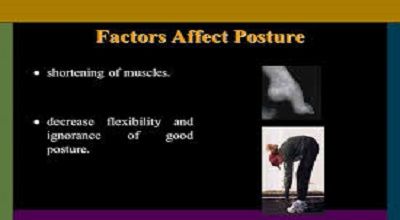Factors which affect the posture
Factors which affect posture: Posture, the way you hold your body when you’re sitting. Standing, or moving, is influenced by a variety of factors. Good posture aligns your body. So it works efficiently without strain. Poor posture can lead to discomfort and health issues. Here are some factors that can affect your posture:
Muscle Strength and Flexibility
- Strong muscles maintain good posture. Weak core muscles can lead to slouching.
- Flexible muscles are essential for maintaining the natural curves of your spine. Tight muscles can pull your body out of alignment.
- Example: Someone who sits all day might have tight hip flexors and weak abdominal muscles, contributing to poor posture.
Ergonomics and Environment
- The way your workspace is set up can greatly affect your posture. An improperly set up desk can cause you to lean forward or slouch.
- Example: A computer monitor that’s too low or a chair without proper support can lead to rounding of the shoulders and a forward head position.
Daily Habits and Activities
- Regular activities or habits can reinforce certain postures, good or bad.
- Example: Constantly looking down at your phone (‘text neck’) or carrying heavy bags on one shoulder can lead to imbalances and poor posture.
Injury or Pain
- Pain or previous injuries can affect the way you hold your body. You might favor one side or adopt awkward positions to reduce discomfort, leading to poor posture.
- Example: Someone with a knee injury might lean away from the injured leg, causing misalignment and compensatory posture in other body parts.
Psychological Factors
- Your mental state can be reflected in your posture. Stress and low self-esteem can lead you to slump or adopt a closed-off posture.
- Example: Someone feeling low might have rounded shoulders and a hung head, while a confident person might stand tall with shoulders back.
Physical Condition and Age
- As you age, your body undergoes changes that can affect posture. Bone strength, muscle elasticity, and balance might decrease.
- Example: Older adults might have a forward head and rounded shoulders due to changes in spine curvature and muscle strength.
Final Conclusion
Improving your posture involves awareness of these factors and making adjustments where necessary. This might include setting up an ergonomic workspace, incorporating strength and flexibility exercises into your routine, being mindful of your daily habits, and seeking help for any injuries or psychological factors affecting your posture. Consulting a professional, like a physical therapist, can provide tailored advice and exercises.
